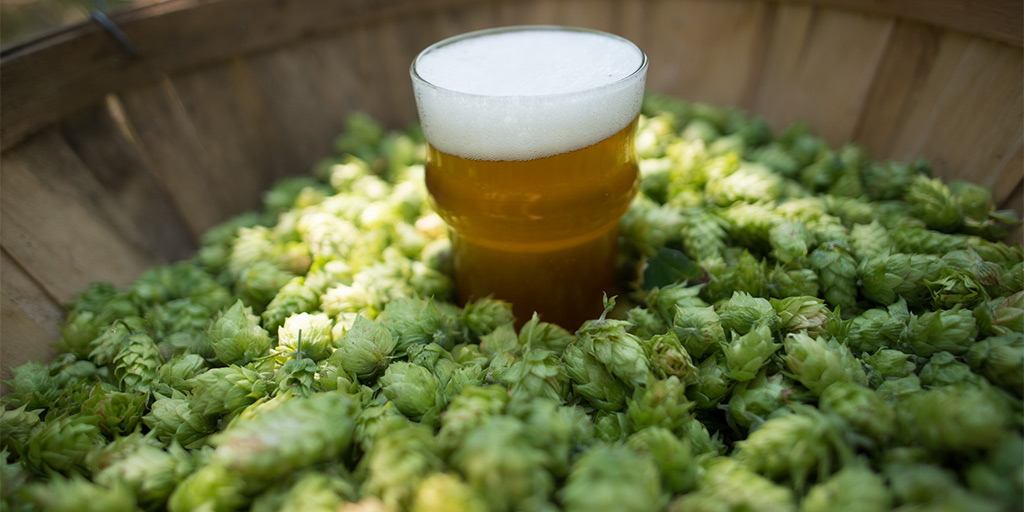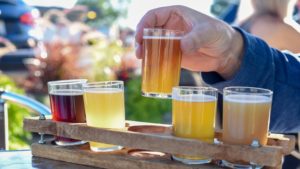
THE HISTORY OF IPA – Part 1
The term pale ale originally referred to an ale that had been brewed from pale malt. The pale ales of the early 18th century were lightly hopped and quite different from today’s modern pale ales. By the mid-18th century, pale ale was mostly brewed with coke-fired malt, which resulted in a process that limited smoking during the roasting of barley in the malting process, which produced a paler beer. One such variety of beer was October beer or the beers we see these days marketed as Octoberfest Bier, a pale well-hopped brew popular among the landed classes, who brewed it domestically; once brewed it was intended to cellar for two years.

So now we have pale ale, but where did India come into the picture. Among the first brewers known to export beer to India was the Bow Brewery, (pictured here) on the Middlesex-Essex border. Bow Brewery beers became popular among East India Company traders in the late 18th century because of the brewery’s location and Hodgson’s liberal credit line. Ships transported Hodgson’s beers to India, among them his October beer, which benefited quite well from the conditions of the voyage and was apparently highly regarded among its consumers in India. Bow Brewery came into the control of Hodgson’s son in the early 19th century, but his business practices alienated their customers, thus affecting loyalty.
Around this same time, the East India Company asked Allsopp brewery to develop a strongly-hopped pale ale in the style of Hodgson’s for export to India. In addition, some Burton brewers, including Bass and Salt, quickly followed Allsopp’s into the market. Perhaps as a result of the advantages of Burton water in brewing, Burton India pale ale was preferred by merchants and their customers in India, but Hodgson’s October beer clearly influenced the Burton brewers’ India pale ales.

With the gates now open, other brewers jumped into the mix. Charrington’s trial shipments of hogsheads of “India Ale” to Madras (now Chennai) and Calcutta (now Kolkata) in 1827 proved successful and a regular trade emerged with the key British agents and retailers: Griffiths & Co in Madras; Adam, Skinner and Co. in Bombay (now Mumbai) and Bruce, Allen & Co. in Calcutta.
Early IPA, were only slightly higher in alcohol than most beer brewed in the day and would not have been considered a strong ale; however, a greater proportion of the wort was well-fermented, leaving behind few residual sugars, and the beer was strongly hopped. The common story that early IPAs were much stronger than other beers of the time, however, is a myth. While IPAs were formulated to survive long voyages by sea better than other styles of the time, porter was also shipped to India and California successfully. History shows that by the 1860s, India pale ales were widely brewed in England, and that they were much more attenuated and highly hopped than porters and many other ales.

Demand for the export style of pale ale, which had become known as India pale ale, developed in England around 1840 and India pale ale became a popular product in England. Some brewers dropped the term “India” in the late 19th century, but records indicated that these “pale ales” retained the features of earlier IPAs. American, Australian, and Canadian brewers manufactured beer with the label IPA before 1900, and records suggest that these beers were similar to English IPA of the era.
IPA style beers started being exported to other colonial countries, such as Australia and New Zealand, around this time with many breweries dropping the ‘I’ in ‘IPA’ and simply calling them Pale Ales or Export Pales. Many breweries, such as Kirkstall Brewery, sent large quantities of export beer across the world by steam ship to auction off to wholesalers once there.

The market remained relatively the same through most of the 1900’s, as the demand for IPA’s was steady but never really saw any growth, as other styles of beer, such as pilsners and lagers drew much of the attention. However, in the late 20th century, during the craft beer revolution in the United States, brewers began seeking out old beer styles that had fallen out of vogue. The traditional IPA style was well-suited to model the intense flavor and aroma of American hops. Bert Grant of Yakima Brewing and Malting identified that Cascade and Chinook hops, grown locally in Yakima, Washington, provided strong flavors when showcased in an IPA. The boom in popularity for IPA as a style spread down the west coast of the United States, then across America and eventually the world.
With the massive growth in popularity of IPA’s, many styles emerged from the “boom” in the 1990’s. Some of which are Black, Brut, Double, Triple, New England and West Coast. We will examine these in more detail in Part 2 of the History of IPA
